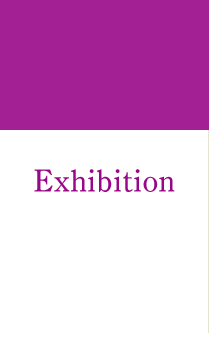2021.10.09(Sat)〜2021.12.05(Sun)
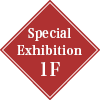

2021.10.09(Sat)〜2021.12.05(Sun)

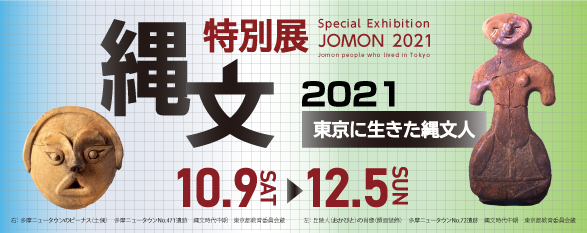
The Jomon period lasted for over 10,000 years. What was the ‘original’ way of life of the Jomon people, who lived over such a long period? As a foundation for reflecting back on the lifestyles and culture of the city of Edo, the Edo-Tokyo Museum is holding an exhibition focusing on the people of the Jomon period, especially the lives of Jomon people in Tokyo, arguably the origin point of this region.
This museum is dedicated to exhibiting items that explain previous ways of life and cultures in Edo-Tokyo that have been restored or reproduced based on historical materials. Building upon its past achievements, the museum will exhibit images of the Jomon period based on the latest academic findings. In doing so, we seek to recreate ways of life at that time through detailed reproductions of living spaces and tools using restored models and images, in order to demonstrate where and how artifacts excavated from the Jomon period were used.
This is the first time in 35 years that a large-scale exhibition presenting Tokyo in the Jomon period has been held, following the 2nd Tokyo Archaeological Exhibition (sponsored by the Tokyo Metropolitan Board of Education), which opened at the Ginza Sony Building in February 1986. We encourage you all to experience the Tokyo of the Jomon period and discover new ways to enjoy archaeology through this exhibition.
Exhibition period: Saturday, October 9 to Sunday, December 5, 2021
Location: Edo-Tokyo Museum, 1st Floor Special Exhibition Room (1-4-1 Yokoami, Sumida-ku, Tokyo)
Phone: 03-3626-9974 (switchboard)
Opening hours: 9:30 am to 5:30 pm (Saturday:to 7:30 pm) *Admission until 30 minutes before close
Days Closed: Mondays
| Admission fee (incl. tax) | Special exhibition ticket | Special exhibition & permanent exhibition ticket |
|---|---|---|
| General | 1,300 yen (1,040 yen) | 1,520 yen (1,210 yen) |
| University & technical school students | 1,040 yen (830 yen) | 1,210 yen (960 yen) |
| Junior high school students (from outside Tokyo), high school students, those aged 65 years and older | 650 yen (520 yen) | 760 yen (600 yen) |
| Elementary & junior high school students (from Tokyo) | 650 yen (520 yen) | None |
*Parentheses ( ) indicate group rates for 20 or more people.
*The special exhibition admission fee is free in the following cases. Preschool children. Anyone who has a physical disability certificate, intellectual disability certificate, rehabilitation certificate, mental health and welfare certificate, or an official designation as an atomic bomb survivor, as well as their attending caregivers (up to two people).
*There is no special exhibition & permanent exhibition ticket for elementary school students and junior high school students who live or study in Tokyo because the permanent exhibition admission fee is free for them.
*Junior high school, high school, university, and technical school students are required to present a student ID card, and those aged 65 and over are required to present proof of age (health insurance card, driver’s license, etc.).
We recommend you make an advance reservation online using the ASOVIEW service, which we have recently introduced to help prevent the spread of COVID-19.
* Please click here regarding purchase via ASOVEW (external site)
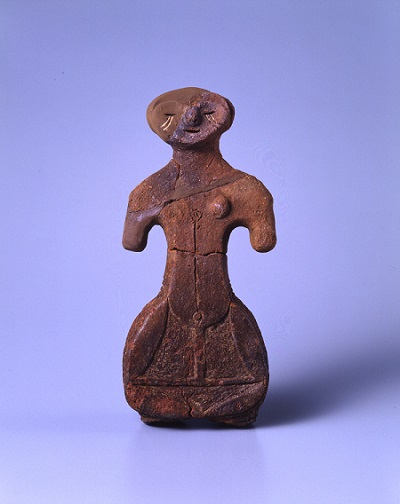 |
Venus of Tama New Town: Dogu (clay figure) Venus of Tama New Town: Dogu (clay figure) / Excavated from Tama New Town Site No. 471 / Middle Jomon Period Collection of the Tokyo Metropolitan Board of Education |
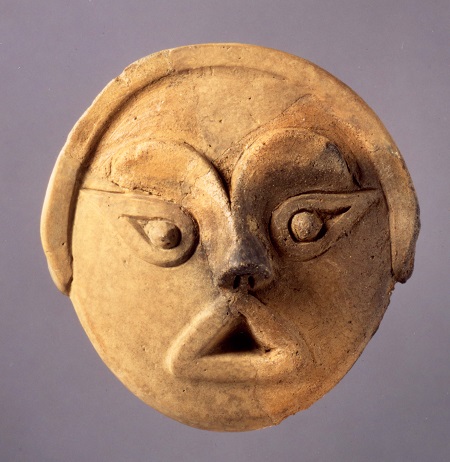 |
Portrait of okabito (dweller of the Tama Hills): Decorative mask / Excavated from Tama New Town Site No. 72 / Middle Jomon Period / Collection of Tokyo Metropolitan Board of Education |
